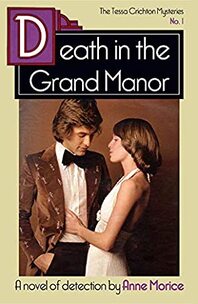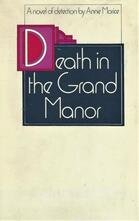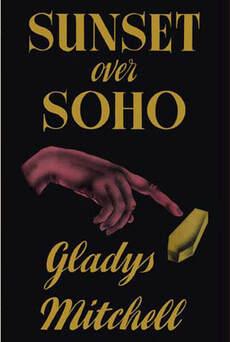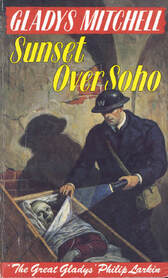
There is much to enjoy with Grand Manor, especially if one is in the mood for a post-Golden Age cosy mystery with a fair amount of winking wit to illuminate dialogue and characterization. The author’s protagonist, Tessa, narrates this tale with an energetic efficiency and a sense of humor that keep the story moving along. This is one of those worlds where you may envy the characters their underemployed lifestyles: villagers have ample time to walk the grounds, consider the gardens, visit the pub, and gossip with the neighbors while not actually holding a job or earning a recognizable income. Tessa herself is content to wait for her agent to call her with an acting offer, and in the meantime spends her days with her cousin Toby, an indolent playwright, at his home on Roakes Common.
As mentioned, the comic tone and breezy wit of Tessa’s narration are the most notable elements of Death in the Grand Manor, and the book feels like a kindred spirit to Simon Brett’s sprightly Charles Paris tales of theatre-set murder and mayhem. Anne Morice also demonstrates a facility for generating clues, especially of the misleading kind. There are many red herrings in Grand Manor, and I followed two of them quite willingly before learning, at the conclusion, that they were indeed false trails. Here is a sample of Tessa’s (and Morice’s) storytelling style, and this agreeable attitude is to be found on every page:
“I shan’t take up much of your time,” Sergeant Baines said, when he had been introduced to Toby and waded through all the preliminary civilities. “I was wondering whether you had been the recipient of anything in the nature of an anonymous letter?”
I quite expected Toby to ask how anything could be in the nature of an anonymous letter without being an anonymous letter, but I saw from the blank and innocent look which he immediately assumed that the question had jolted him beyond the point of pedantry.
Along these lines, the most jarring note for me in the whole book comes at the dénouement, when two families with children have suffered a tragic impact (including Tessa’s niece) from the murder and its aftermath, and no reference is made (even in passing) about the new, sobering reality for the affected family members. Murder mysteries do not have to pulsate with capital-T Tragedy – they can be lighter entertainment, as Anne Morice surely intended here – but ignoring completely the consequences brought on by an identified and apprehended killer gives the reader one more excuse to dismiss the story as mere disposable fantasy.



 RSS Feed
RSS Feed